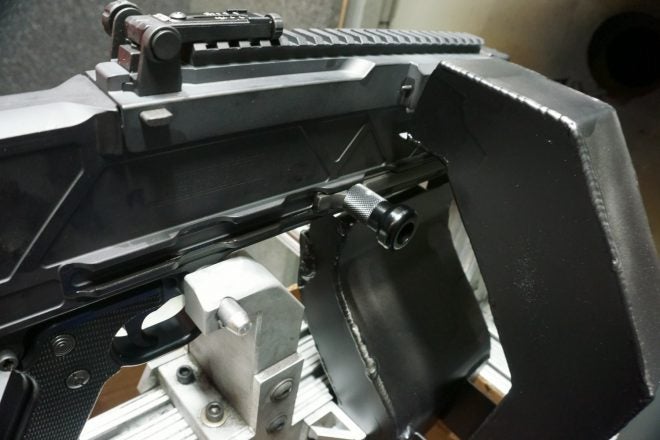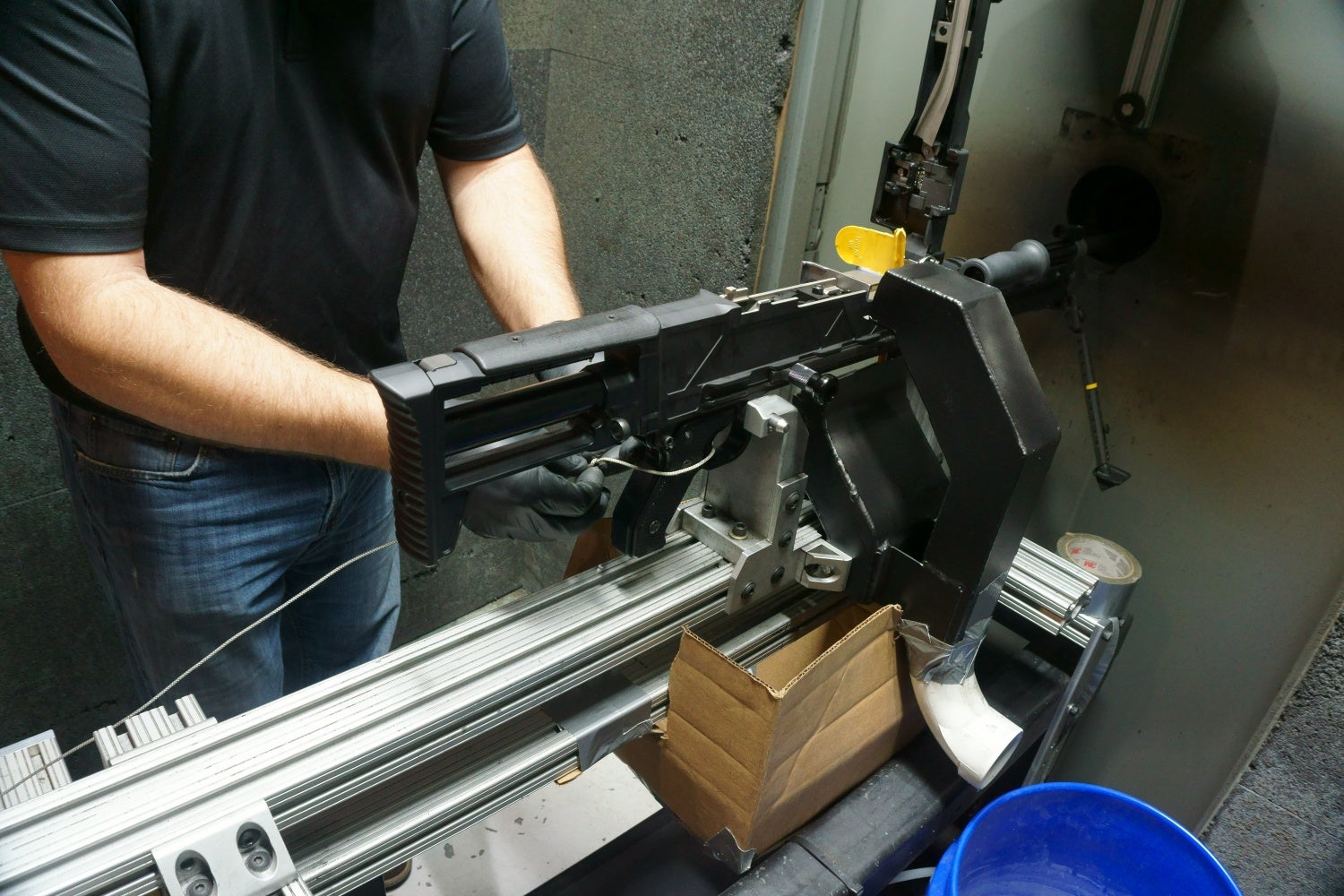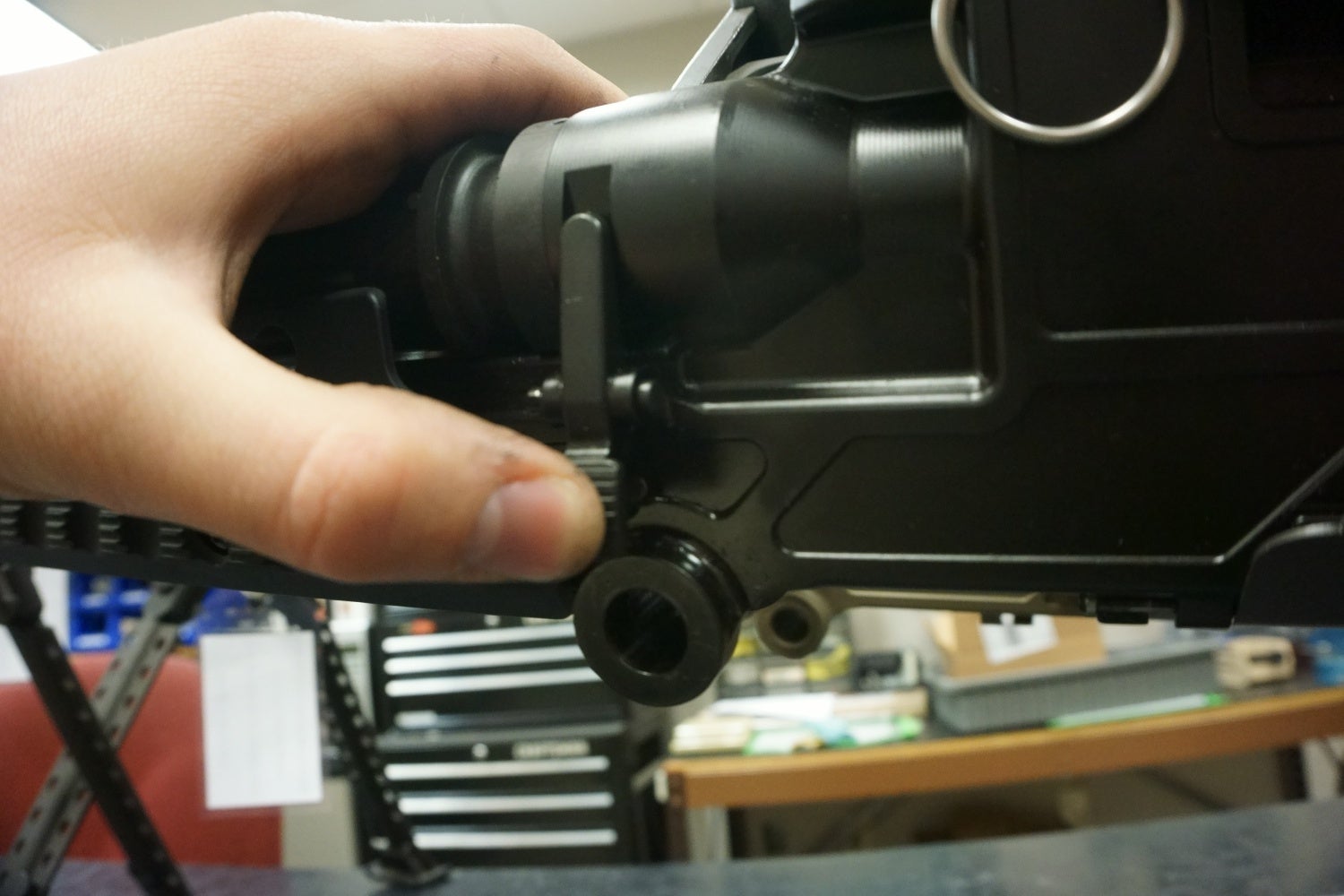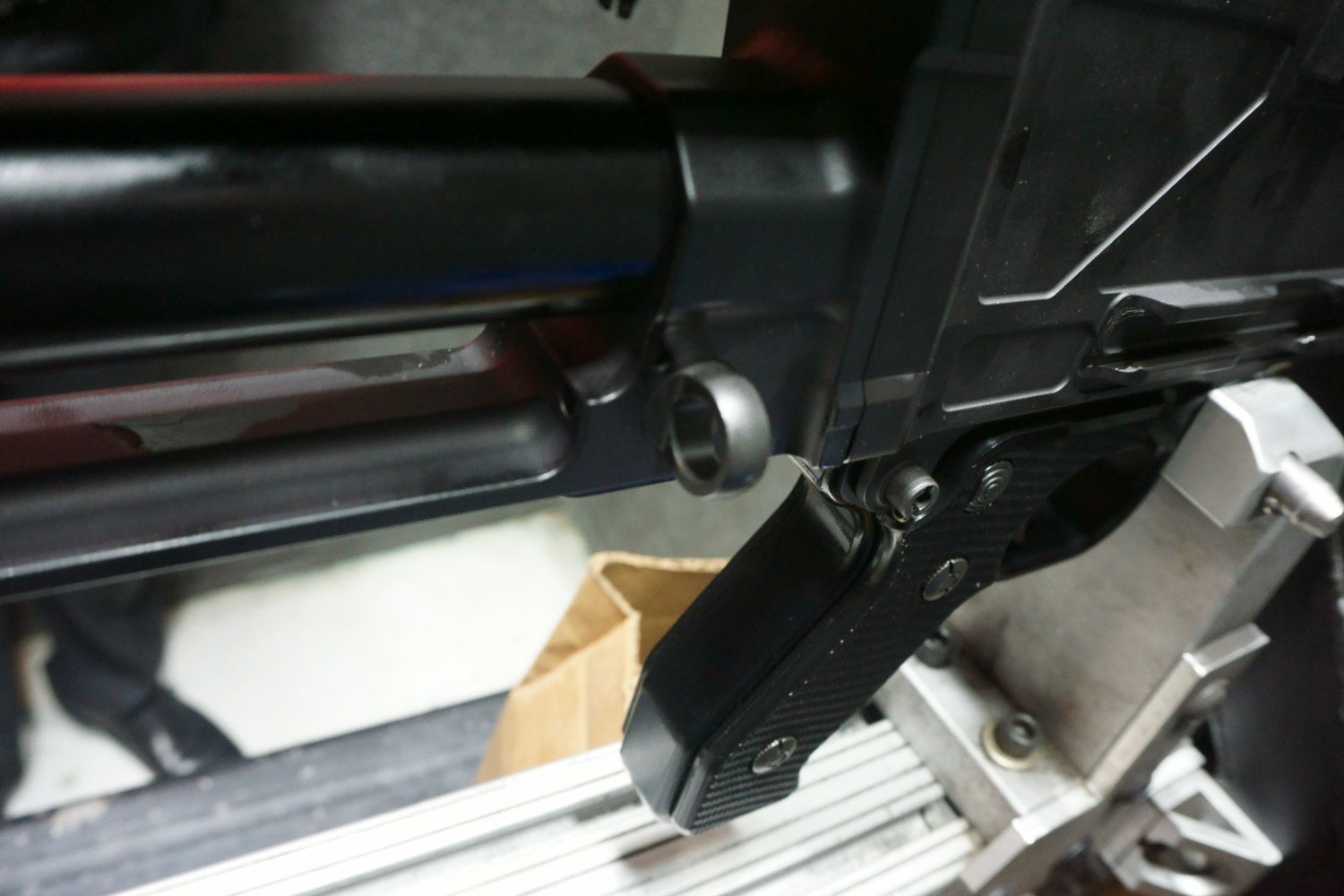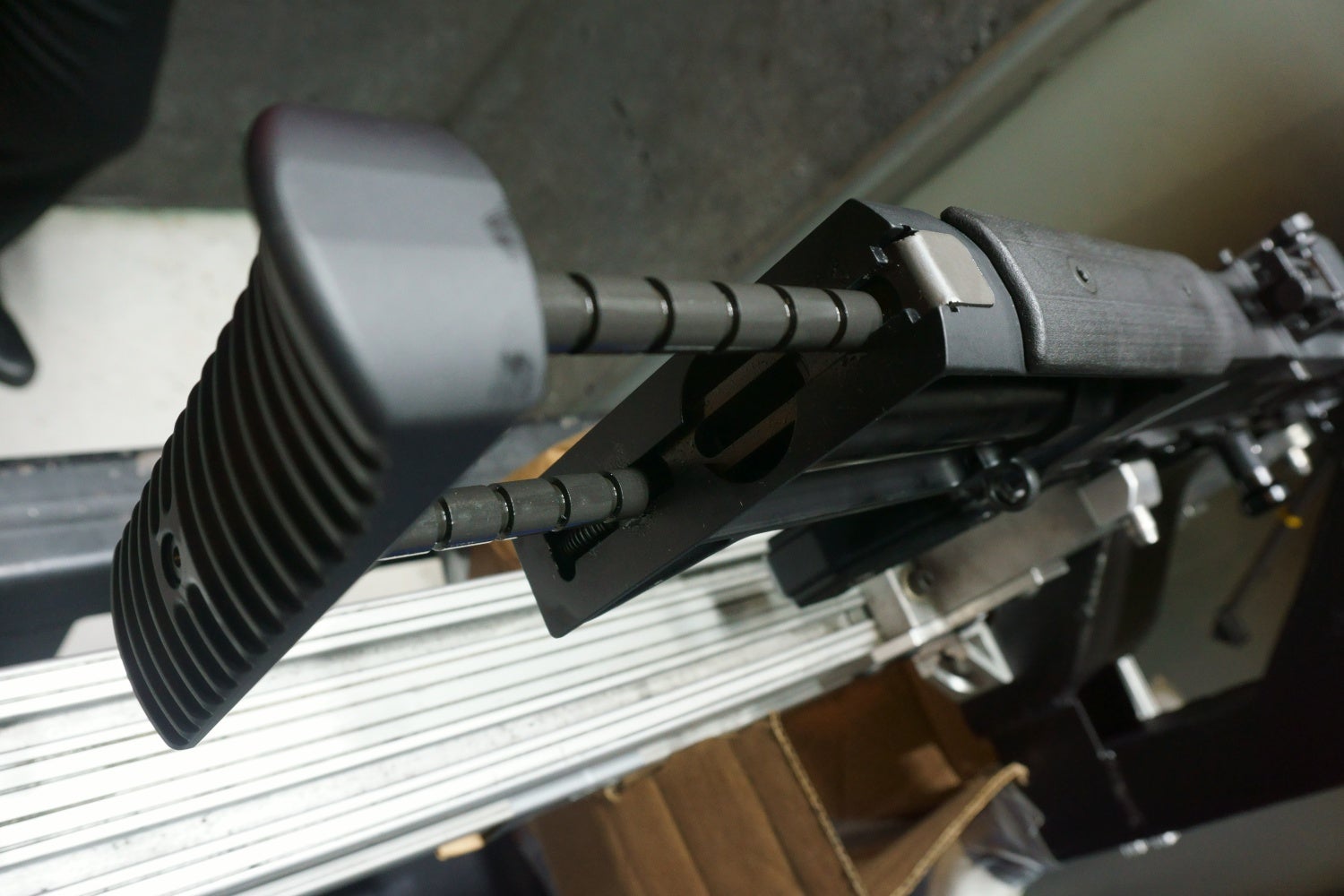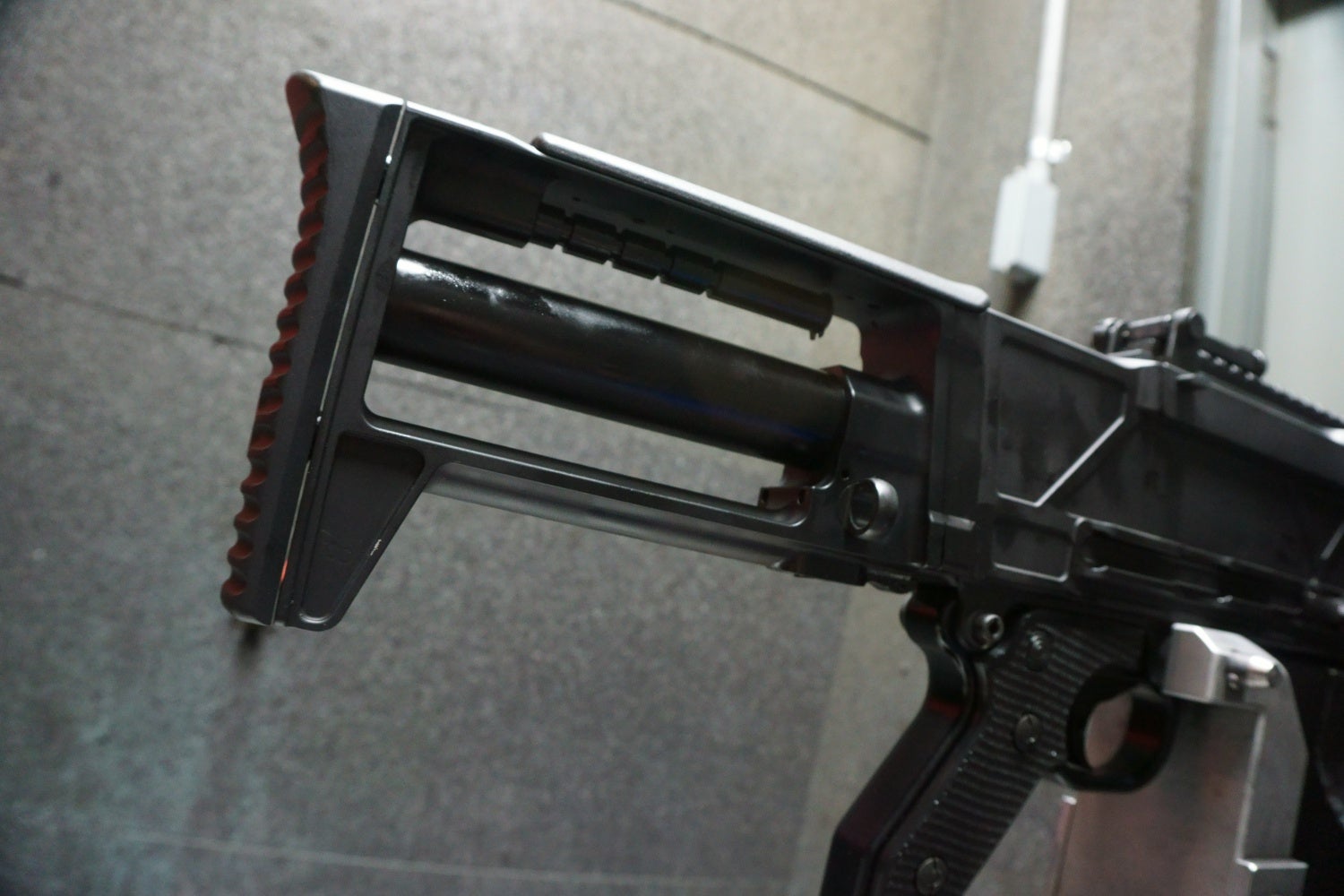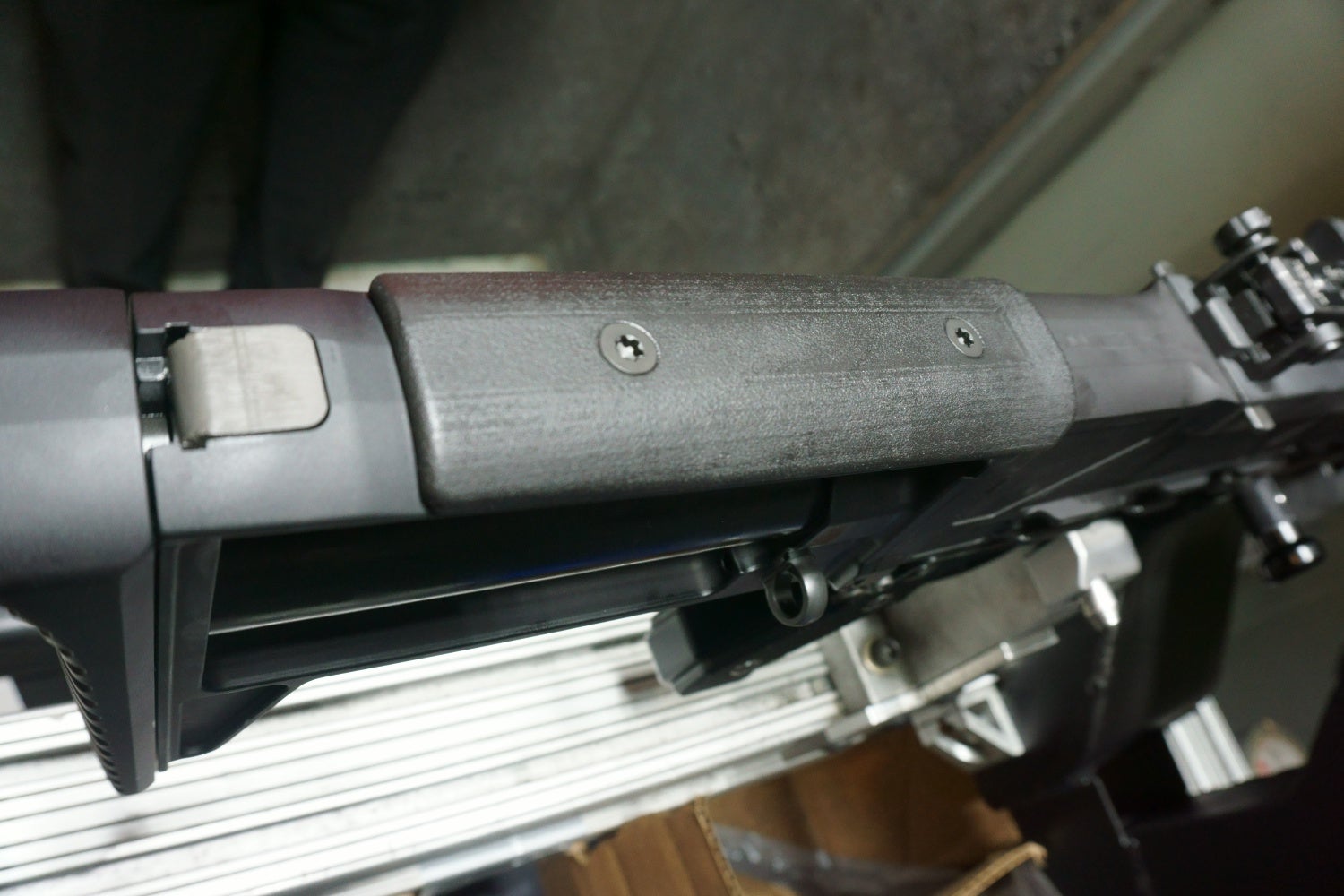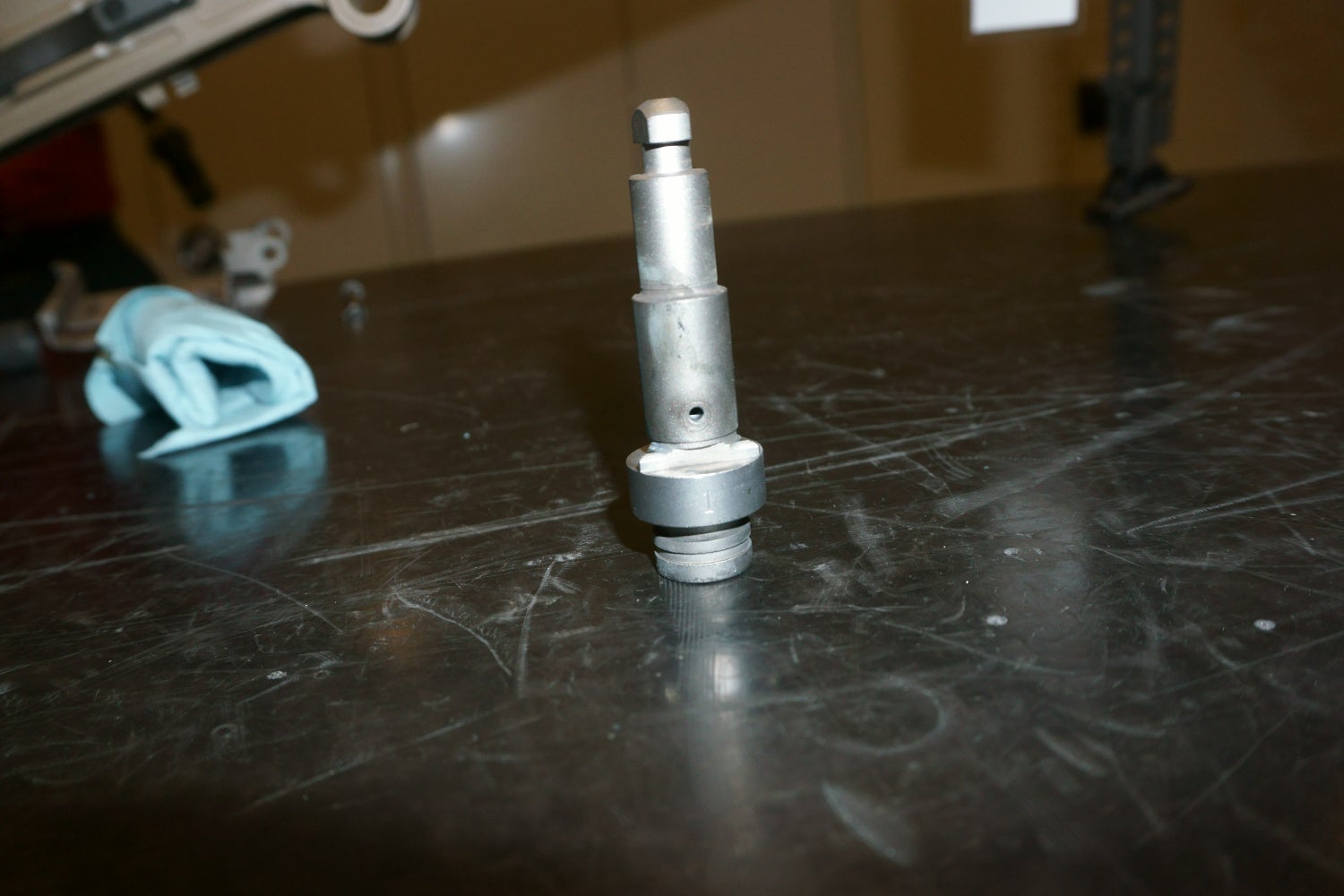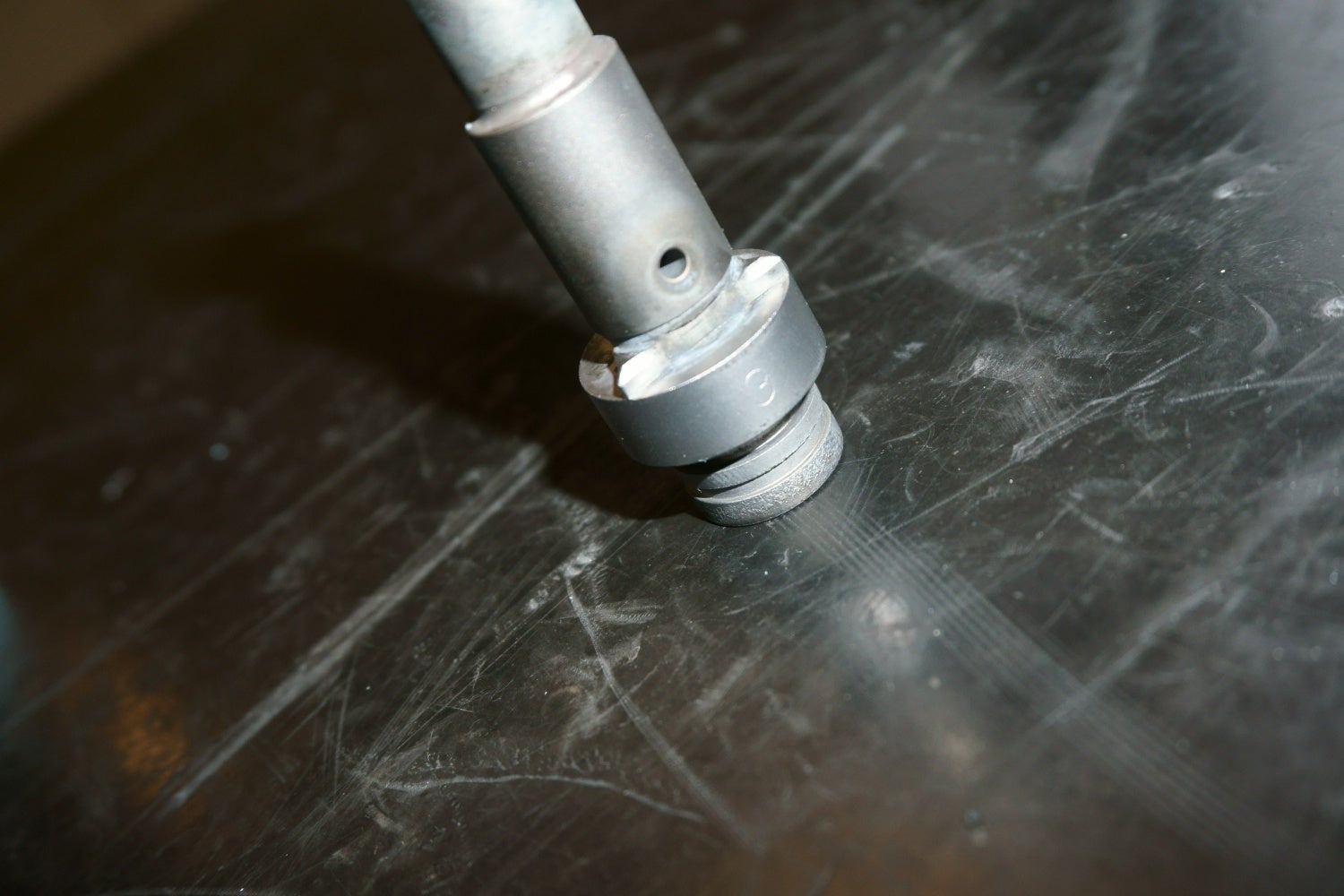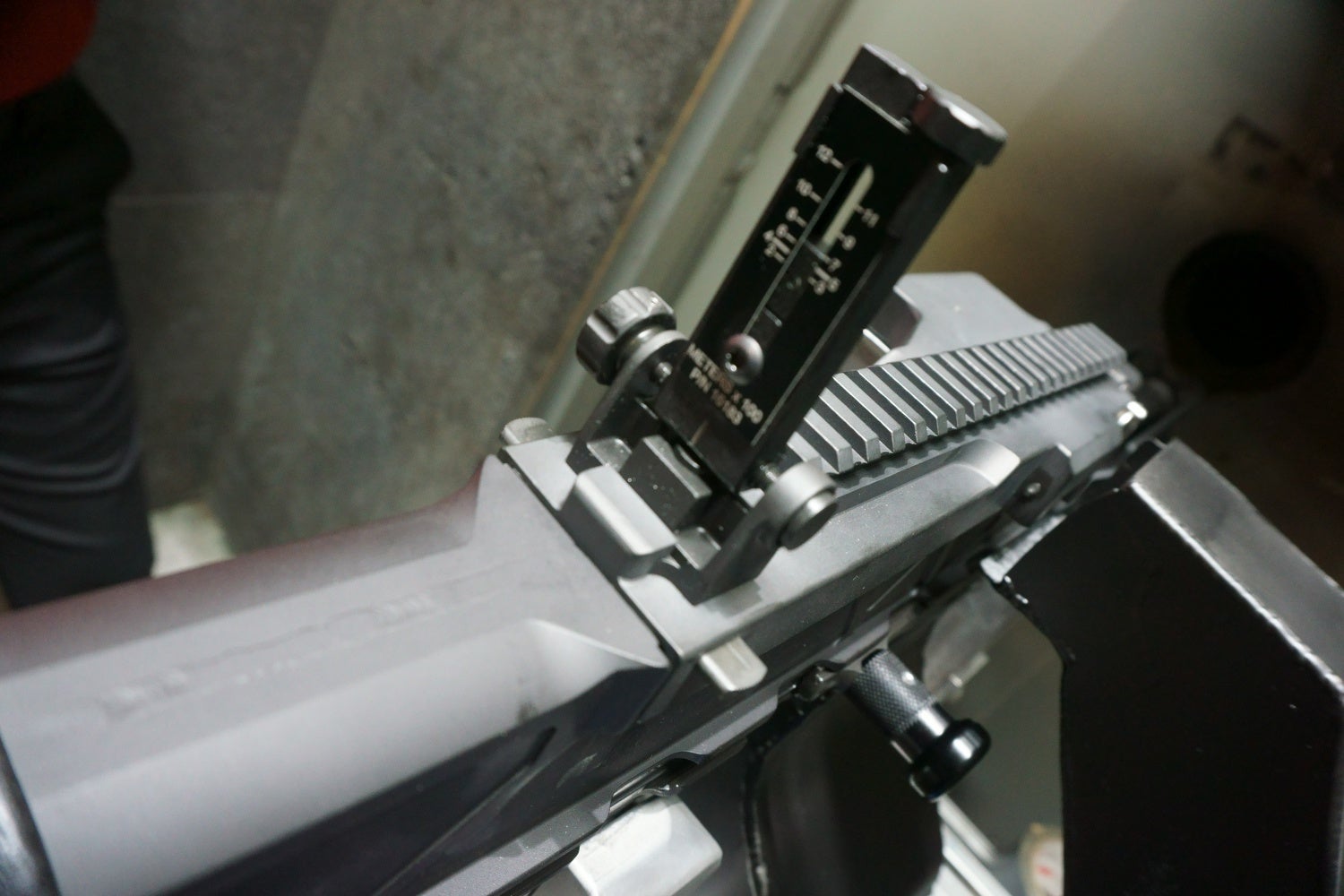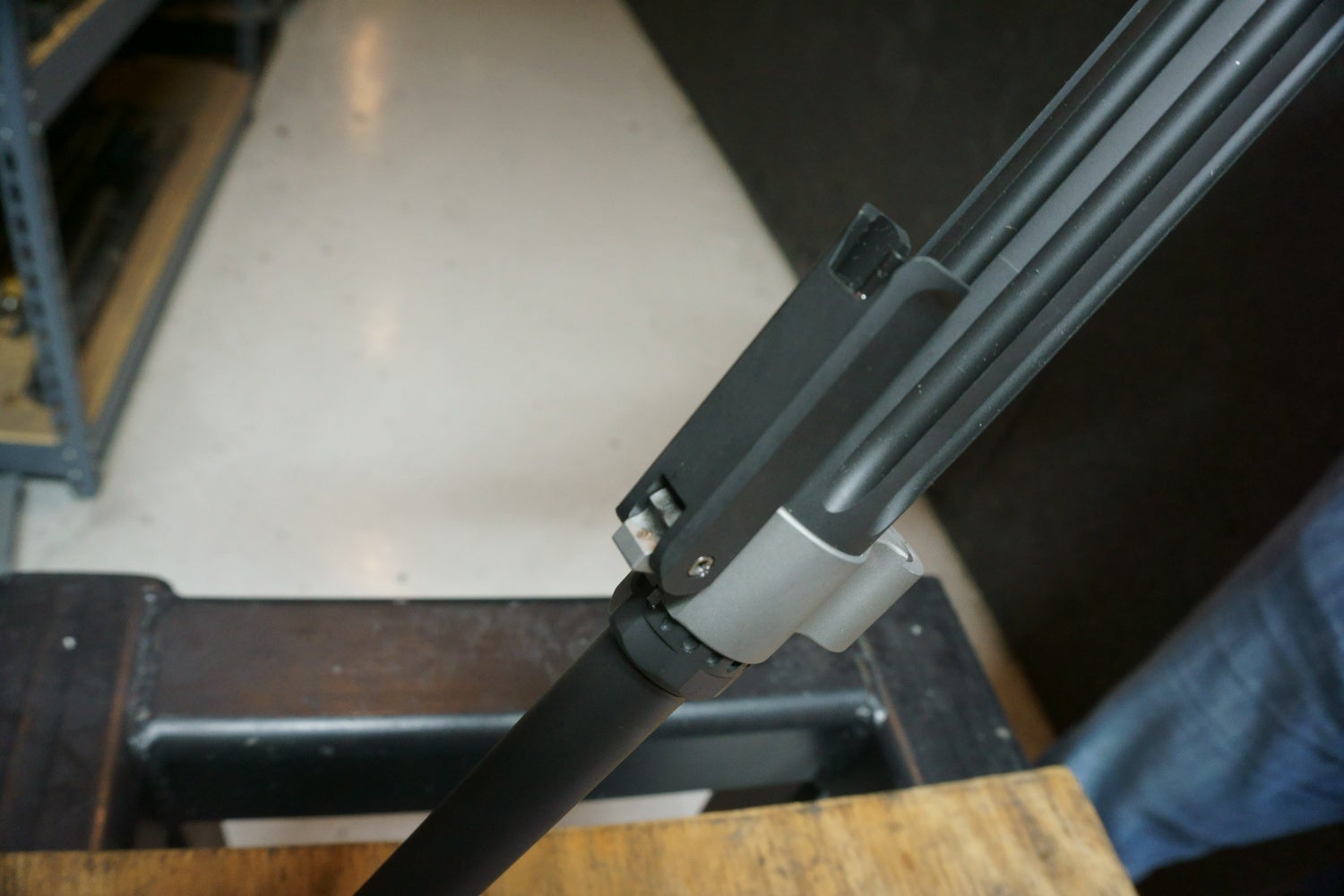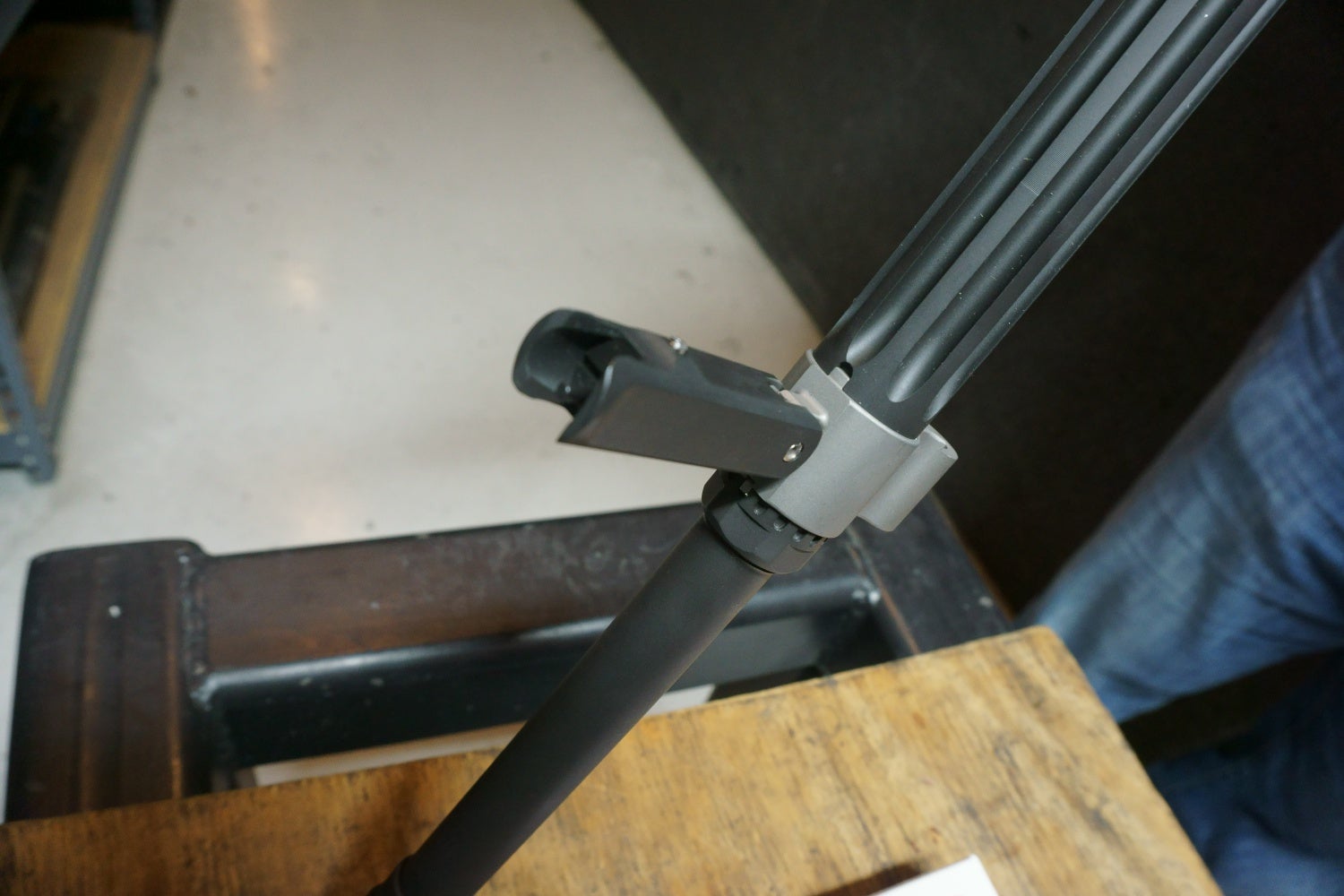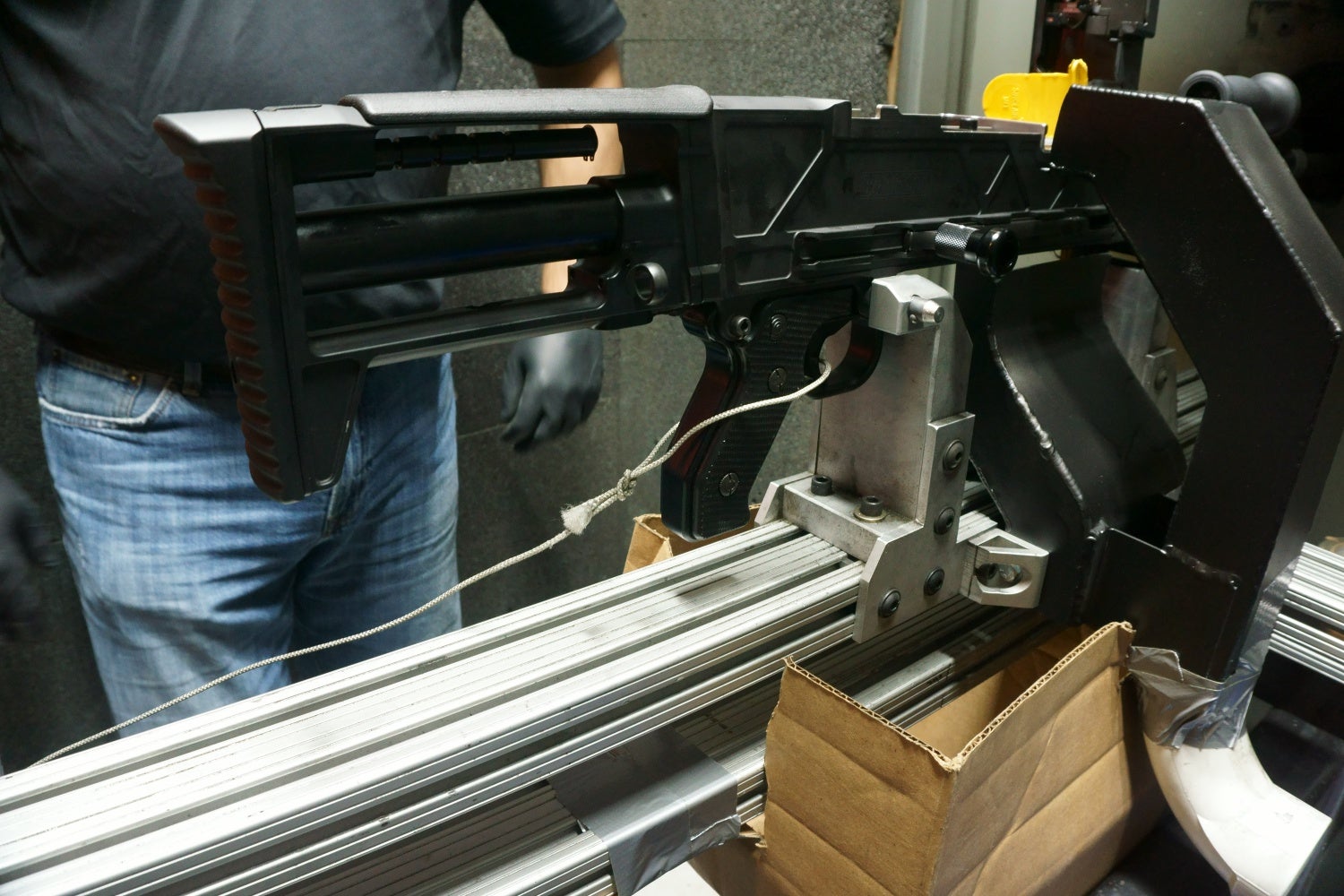Recently we’ve published the Barrett factory tour, and another article on the M82/M107 series of rifles that the company is well known for. However, this might soon come to be another small arm that if successful, the company will have continued success. That is the Barrett 240 Light Weight, Barretts entry into the general purpose machine gun market.
Barrett approached the whole idea of upgrading the 240 platform due to the solicitation by the U.S. Army in 2010 for a lighter M240 medium machine gun. FN Herstal answered this with a 240B mostly built out of titanium, thus lightening the machine gun by almost four pounds. Barrett sort of looked at this, and although the company didn’t participate in the solicitation competition, the company thought that they could make a similar weight loss, through a redesign of the machine gun. Now, the technical data package for the M240 is more or less for sale, because it has been a long time since the gun was invented in the 1950s with the MAG 58. Similar to how patents expire, Barrett was able to acquire the design and produce it at the company’s factory in Murfreesboro, TN. The project began in around 2012 , but was put on a more or less hold. But within the past two years, the project was given new life, and with the assistance of a very interested buyer, has been through some rigorous testing procedures. In addition Barrett was able to get an experienced Marine 0331 Machine Gunner involved in the design process, so the company gained some valuable insight from real world experiences in Iraq.
The big question is, how does the company make it lighter?Down to 21 pounds unloaded and optics unmounted to be precise. The biggest answer to that is that instead of using rivets, like the 240 and MAG 48 machine guns originally use to hold the two receiver halves together, the company instead went for a process of welding the halves together. Both of these pieces are also made from solid billet, 4140 steel. Then they started looking at all the smaller parts on the weapon, looking for ways to lose weight, but also bringing it into the 21st century as it were. Bits like the now telescoping buttstock, the fluted barrel, the front and rear sights, among other pieces. The design of the handguard and bipods are quite innovative for example. In the original 240, the handguard is affixed to the gas tube assembly, thus becoming extremely hot during the course of fire. Barrett took a look at this and made a handguard with hand grips and Key Mod rails, and instead bolting it directly to the receiver. In this arrangement, the gas tube is actually free floating within the handguard, never touching it. Thus, the gun can be fired at a very high rate of fire, and the handguards will have minimal heat transfer from the heat building up in the gas tube.
Apart from the heat minimizing qualities, the end of the handguard has removable bipods. These are M60 type bipods (similarly used on the M82/M107 series) that have a pintle mount similar to Versa Pod bipods or Accuracy International bipods. They are held in place by a latch that is depressed on both sides of the handguard to release them. Having removable bipods has a number of advantages to a machine gunner, being able to quickly remove them if they become damaged or being able to take them off when in a position that would be easier defended with more movement on the gun. In addition they can be folded to the rear, or to the front.
Even compared to what we saw of the machine gun at SHOT 2016, the gun is continually being refined and updated. The former QD sling swivels and rear sight is going away, to be replaced with a smaller rear sight, and solid sling swivels. When I was at the Barrett factory in March, the company had just completed a 20,000 round test fire of the machine gun, with no issues so far. They will be pushing the limits on it as time goes on. In addition, the company has an even lighter version of the LW, the 240 LWS or Light Weight Short. This variant is designed more along the lines of being employed in a special operations capacity, whereas the 240 LW is more for getting a lighter and upgraded version to replace the M240 currently in service with a number of countries all over the world.
One of the questions of the LW is who is going to buy it? Mainstream firearms companies aren’t usually in the process of coming out with novelty products, if their products don’t sell, then the company doesn’t survive. But the answer to this question is that there have already been two purchase orders and deliveries of the 240 LW, to the national militaries of two different countries. The company won’t reveal who it is, but rest assured, the LW is far from a pipe dream of a machine gun design.
 Your Privacy Choices
Your Privacy Choices
